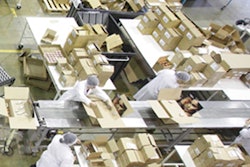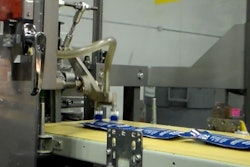Each of these flavors requires different roll stock, cartons, and a properly labeled shipper. Since manual reading of each of these stock numbers by the operators is part of the setup, what safety mechanism prevents your raspberry ice from becoming tropical punch in mid-run as a roll of form fill/seal/stock is changed out for a new one? Why didn’t your production system double check this before it happened—shouldn’t it be looking out for you?
In many manufacturing settings, data-reading devices ensure that the right pieces are in the right place at the right time. As a side-benefit, they track and measure inventory, and help control costs.
So why don’t we see more of this in packaging? If other manufacturing operations have component tracking systems to ensure that assembly is correct, and the local big-box store has wireless product code readers distributed in the store, why doesn’t your operation have relatively simple technology checking that the packaging components that are being put on-line are the correct ones?
The world of packaging is in a fascinating economic corner. There is seldom large-scale investment in new technology in existing operations, yet there is ubiquitous demand for very high quality production runs and consistently defect-free production that makes it a natural application for data-intensive operations adapted from other industries. The lack of understanding of potential benefits that will pay back the investment and technology base makes these implementations sporadic at best.
Many production systems often run on a bar-coded “Electronic KanBan” system that monitors inventory, and inventory may be tracked within production facilities, but too often not at the point of operations. Why not have the system check production components at the point of loading into the machine? Usually it’s because someone has decided it’s too expensive, too complicated, or requires manpower that isn’t in place. But what is the cost of a mislabeled run, a mismatch of components, or simply filling the wrong product? What is a bad run, a bad batch, or hours of line time worth?
The implementation of this is relatively straightforward. The integration with order fulfillment systems is less so—the required stock number for each component must be part of the manufacturing order and the data-reading equipment must know whether a component is the correct one or not. Once this is done, however, the operators have a simple backup plan (much as hospitals do when dispensing medications to patients). Call up or scan the order sheet, scan the component code for verification, and use the component or material.
Secondary benefits of this are just waiting for the clever user. When the line/order fulfillment system knows where things are going, estimations of use rates and cost can be provided and material management optimization becomes much easier. At that point not only is your production system looking over your operators’ shoulders, but also it’s telling you what you’re buying too much of and where it’s all going.
Shouldn’t this be where you’re going in your operation?
Scott A. Morris ([email protected]) is the director of the packaging program at U. of I. Urbana-Champaign.
























